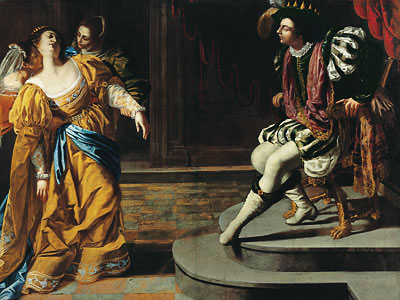Apr
10
2009
There is a lot of truth in theonomy. But things have changed since the time of Moses. At that point, the church and state were basically one.
After the exile, things were different. The role of the Jews was to be priests within the Gentile state. They no longer had the right to administer capital punishment. When they witnessed faithfully, there was a Jew at the emperor’s right hand, steering the empire for God’s people and their stand for the truth.
By the time of Christ, instead of a Joseph, Daniel or Mordecai, the Jews had a Haman, a Herod. Instead of being a nation of priests, they wanted a king like the Gentiles. This makes Herod even more culpable for his role in the death of Christ, standing (legally) at the right hand of the power.
I believe the church today is exactly the same. The church administers ‘inhouse’ justice through excommunication. When the church is faithful in disciplining itself, and thus witnesses faithfully, it stands side by side with the state in administering capital punishment. Our failure to witness has led to ‘life’ for murderers and death for the innocent.
The Bible is clear on the shedding of innocent blood. A murderer dies to atone for the blood he shed. It is judicial. Correlating capital punishment with abortion is a total misunderstanding of justice.
As in AD70, perhaps all the innocent blood shed in this gospel age will be atoned for by the final generation. The murderers are marked like Cain for now, but Abel’s blood will be atoned for.
Comments Off | tags: Abel, AD70, Atonement, Daniel, Haman, Herod, Joseph, Mordecai, Moses, Theonomy | posted in Ethics
Apr
10
2009
Saul and Agag
 I puzzled over Ezekiel chapters 38 and 39 for years. Bible commentators suggested many things but nothing seemed to fit the historical context of the surrounding chapters. It seems James B. Jordan was the first to put the pieces together.1
I puzzled over Ezekiel chapters 38 and 39 for years. Bible commentators suggested many things but nothing seemed to fit the historical context of the surrounding chapters. It seems James B. Jordan was the first to put the pieces together.1
Continue reading
Comments Off | tags: Amalek, Atonement, Babylon, Bible history, Esther, Ezekiel, Gary DeMar, Haman, James Jordan, Mordecai, Saul, Typology | posted in Against Hyperpreterism, Biblical Theology, The Last Days, Totus Christus
Apr
10
2009
In the book of Esther we have in type the wisdom of God that had Paul in awe as he wrote the letter to the Roman Christians. By sending the gospel to the Gentiles, the enemies of God were exposed. When the new bride was persecuted, the Jews were forced to endorse either the New Covenant people or their attackers. In this process, “all Israel” was saved (Romans 11:26). The old Jerusalem was purified and redeemed. Because of Mordecai’s disobedience in failing as a witness, Esther was able to obtain mercy (Romans 11:30-32). Peter Leithart writes:
“…the book is more about Mordecai’s exalation than about Esther. Esther’s exaltation to queen is part of the means by which Mordecai and the Jews are ultimately saved, and the story climaxes with Mordecai at the right hand of the king (like Joseph and Daniel—Esther 10:2). Further, the key moral transition in the book comes when Mordecai stops urging Esther to hide her identity. A disappointment for feminist interpreters perhaps, but the book is more the book of Mordecai than the book of Esther.”
Comments Off | tags: Esther, Mordecai, Peter Leithart | posted in Biblical Theology, The Restoration Era, Totus Christus
Apr
8
2009
There is a lot of truth in theonomy. But things have changed since the time of Moses. At that point, the church and state were basically one.
After the exile, things were different. The role of the Jews was to be priests within the Gentile state. They no longer had the right to administer capital punishment. When they witnessed faithfully, there was a Jew at the emperor’s right hand, steering the empire for God’s people and their stand for the truth.
Continue reading
Comments Off | tags: Abel, AD70, Daniel, Haman, Joseph, Mordecai, Theonomy, Witness | posted in Biblical Theology, Ethics
Apr
8
2009

Esther before Ahasuerus, 1628–35. Artemisia Gentileschi (Italian [Roman], 1593–1651/53).
The repeated structures in the Bible allow us to fill in some of the gaps. Although it can’t be proved from Genesis 1-3 that Adam and Eve would have been given robes if they had obeyed, the event is repeated many times throughout the Bible and there are robes of office for the obedient.1
Similarly, the event is repeated in the book of Esther. Without a Jewish king, the role of the restored Israel was that of a priesthood of all Jews within the “Tabernacle” of the empire. So Mordecai’s failure, in advising Esther to hide her identity, epitomises the failure of Israel even at this early stage in this era.
Enter the snake, Haman. Continue reading
Comments Off | tags: Compromise, Esther, Greater Eve, Mordecai, Revelation | posted in The Restoration Era



























